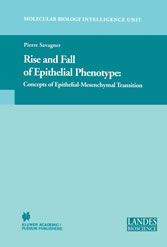Suchen und Finden

Rise and Fall of Epithelial Phenotype - Concepts of Epithelial-Mesenchymal Transition
Mehr zum Inhalt

Rise and Fall of Epithelial Phenotype - Concepts of Epithelial-Mesenchymal Transition
Epithelial phenotype is a dynamic stage of differentiation that can be modulated during several physiological or pathological events. The rapid conversion to a mesenchymal-like phenotype is called an epithelial-mesenchymal transition (EMT).
The Rise and Fall of Epithelial Phenotype is the first book to comprehensively introduce the concept of EMT. The first part of this volume describes main examples and models and explains their physiological relevance. These examples include hydra morphogenesis, gastrulation in mouse, drosophila and sea urchin, as well as neural crest cell migration and heart morphogenesis in vertebrates. Part two reviews in detail, specific EMT molecular pathways covering extracellular induction, transduction and transcription response and modulation of cell-cell adhesion structures. It emphasizes new specific pathways with potential medical applications. EMTs can also be linked to pathological events such as wound healing and cancer progression, as detailed in this section of the book.
Alle Preise verstehen sich inklusive der gesetzlichen MwSt.





















